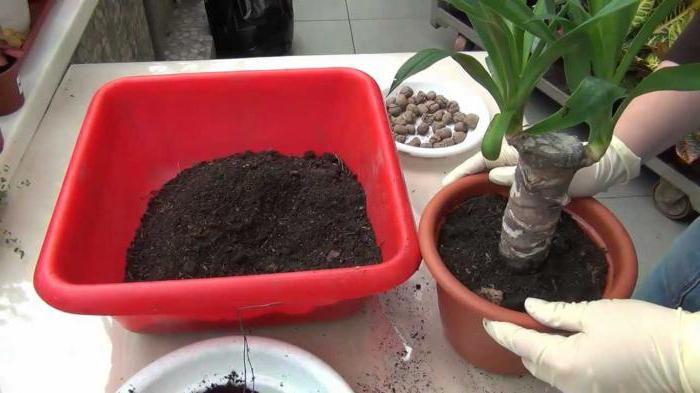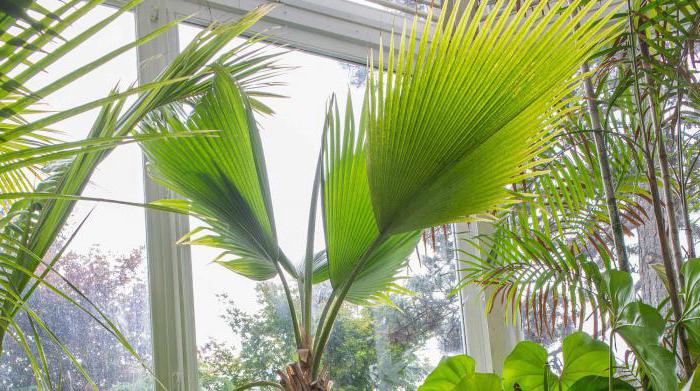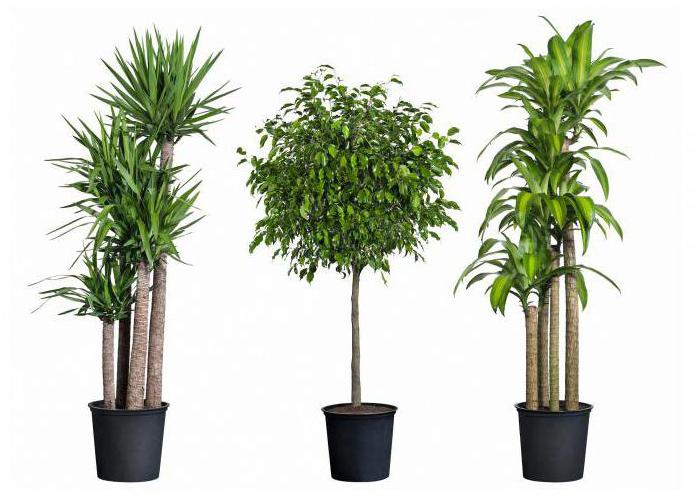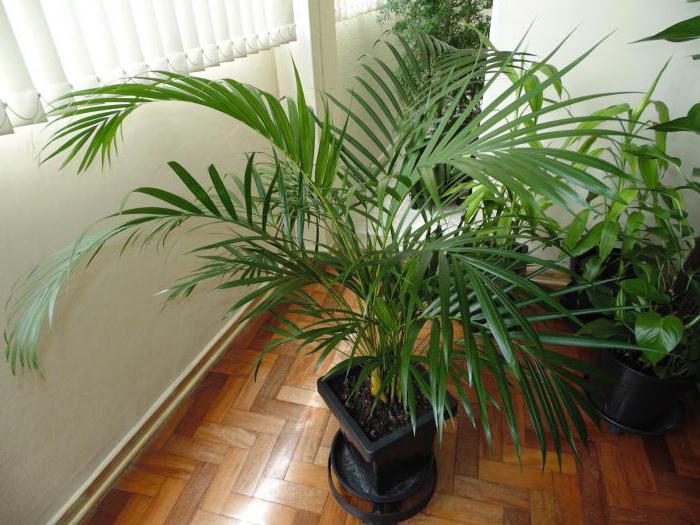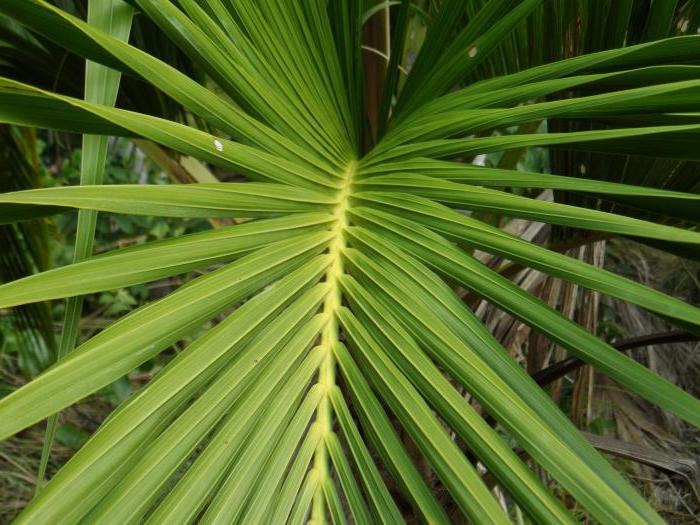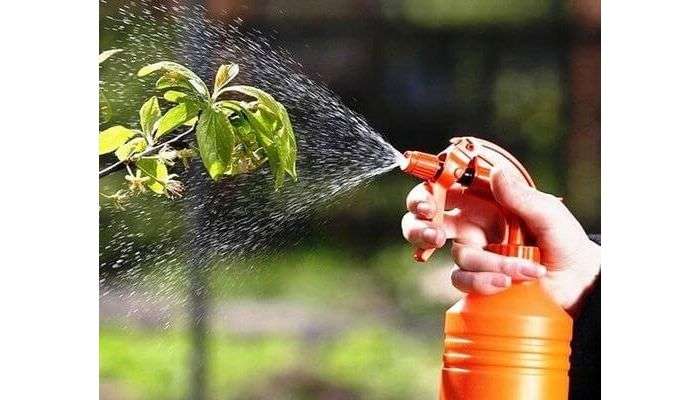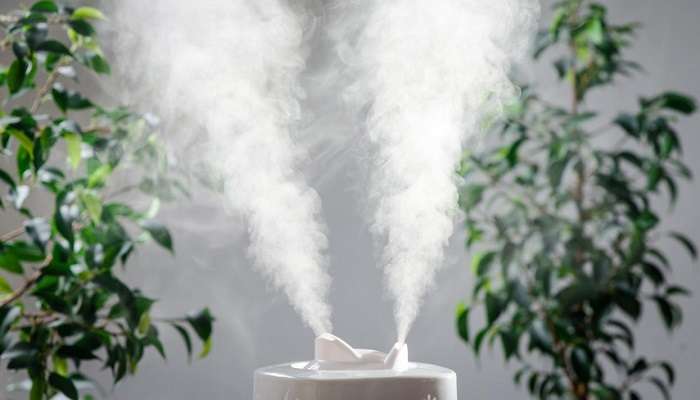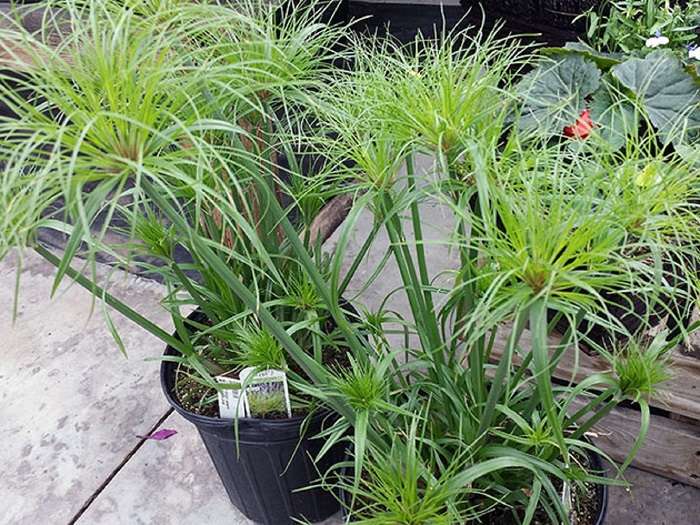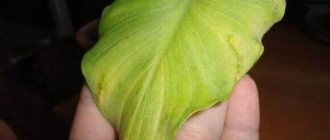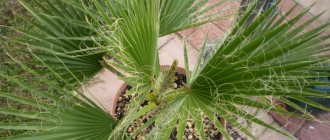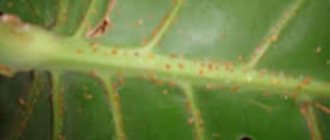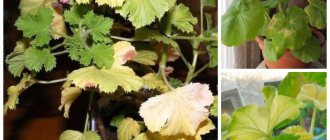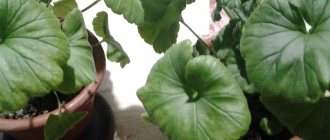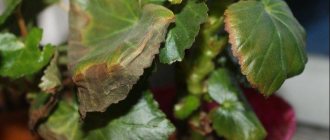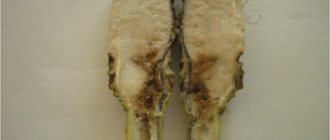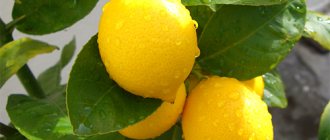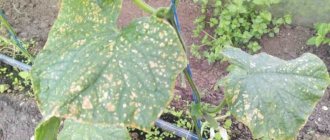The main factors
Palm is a tropical plant. To keep him in an apartment, the owner needs to make an effort and create conditions in which he will be comfortable. Otherwise, the foliage turns yellow, turns brown or dries up, and the plant itself may die altogether.
Palm leaves can fall off for natural reasons. In the process of natural abscission, plants usually shed the lower part of the foliage. However, the leaves turn yellow due to the influence of other reasons that growers should know.
Dry air
Many people who have indoor plants may wonder why the leaves of a palm tree turn yellow. Intensive heating in apartments in winter causes dry air. In such conditions, they feel uncomfortable. The optimum temperature during the cold weather should not exceed 15-20 ° C.
To optimize the conditions of detention, the air is humidified. Florists also spray their plants with a spray bottle and moisten the top layer of the earthy coma in which the palm tree is planted. It is worth remembering that frequent watering is not required.
Drafts
The statement that the palm tree should be kept in the south at home is incorrect.
Direct sunlight does not bring him any benefit, they have a detrimental effect. The best solution would be to place a container with a plant at a short distance from the window opening.
Drafts are a phenomenon that is contraindicated in palm trees. Winter drafts are especially harmful. Cold air causes harm, due to which the leaves change their color (turn yellow, turn brown or turn black) or completely fall off, and the plant itself withers and dries.
It is worth remembering what to do with the plant while the room is ventilated. Experienced flower growers recommend covering the palm tree with a cloth or taking it out of the room. Do not block the flow of fresh air streams, otherwise the growth process will slow down.
Frequent and incorrect transplanting
Another common reason why the leaves of a palm tree turn yellow is an improper transplant. Many growers can make the mistake of replacing the pot in which the indoor palm grows too often.
Moving from one pot to another is necessary when the root system grows so much that the old container becomes small. For young plants, this frequency is no more than once a year. Older trees are usually replanted once every three years.
Sometimes replacing the top layer of the earthen coma will be sufficient to prevent problems and save the plant from wilting and death. It is also worth remembering that the new pot in which the indoor palm will be planted must be higher and wider than the previous one.
Frequent transplant
The palm tree does not like frequent transplants, but since this cannot be avoided at home, the procedure must be minimized. A young plant up to 3 years old is transplanted once a year, since during this period it already has time to outgrow the allotted pot. An adult palm is moved to a larger container every 3-5 years. At the same time, they look in which direction the roots grow: the accumulation at the edges requires an increase in the diameter of the pot, and at the bottom - the height.
During transplantation, the plant is moved along with the clod of earth in which the roots are located, this will protect them from damage.
Harmful organisms
Not always the reason why the leaves of a palm tree turn yellow lies in the conditions of the plant. The answer to the question that worries many growers may be somewhat unexpected, but natural.
Shield
Scabbards are the most common insects, due to which the palm tree dries up, and the deciduous cover changes its color or completely falls off. Scabbards are brown homoptera insects with a rounded body. Females have a so-called scutellum. Pests are attached to the young shoots of the plant, sucking the juices.
Among the many options for dealing with scale insects, the florist can choose the one that he considers the most effective. If the choice falls on insecticides, then it is recommended to use Actellik. This drug has shown itself to be the most effective.
Spider mites
These insects are difficult to see and notice. A feature of their activity is not only that the leaves on the palm turn yellow, but also that they begin to become covered with cobwebs.
The insect known as the mealybug is the most dangerous to trees and may also be the reason why the palm turns yellow. This louse is white and large in size. When attacked by this pest, the foliage turns yellow, the plant becomes as if sprinkled with flour, all parts of the tree are covered with mucus.
Olive oil helps fight mealybug
What to do when the leaves dry in the middle
Often the leaf dries up in the middle. The greens are covered with spots that are a threat to the health of the flower. Basically, such spots indicate insufficient attention to the plant, and their color will help to understand what exactly the ailment is:
- Spots of yellow color indicate a burn, and the flower should be placed away from sunlight.
- Brown - appear after exposure to cold air or with a sudden change in temperature, perhaps the pot is on the window and when airing the flower blows cold air.
- Brown marks with a yellow center indicate the attachment of such a disease. as an alternariosis.
- Elongated brown spots are a consequence of the heterosporium disease.
Keep in mind! Occasional drying and leaf fall is a natural process of plant growth. If the problem is one-off, then there is no cause for concern.
Blackening of the foliage
The tips of the leaves may turn black. The causes of this problem are most often in the conditions in which the indoor palm is kept.
To date, the following factors are known that cause blackening of the foliage in palm plants:
- Dry air prevails in the room.
- The palm is not properly watered.
- Influence of cold air currents.
- Caked earthen lump.
To help the plant, you do not need to do anything special, it is enough to eliminate the cause of the problem. Florists recommend applying fertilizing with fertilizers.
If you had to think about the question of why the leaves of the palm tree are drying, or other unhealthy metamorphoses are observed, then you should think about whether the basic recommendations for plant maintenance have not been violated. Knowing how to properly care for a palm tree, you can avoid the need to save it from problems with leaves and from possible death.
In order not to rack your brains over why the palm tree dries, you should not overlook the following points:
- Maintain optimal air humidity.
- Ventilate the room containing the palm tree.
- Providing a natural process for moisture evaporation.
Keeping in mind that palm leaves turn yellow mostly due to violations of optimal conditions, many problems can be avoided.Adhering to elementary rules, a florist can rejoice for a long time that a healthy and beautiful palm tree grows in his house.
Leaves turn yellow
The Australian palm is considered. However, if you do not follow the humidity and temperature regime, her crown suddenly begins to turn yellow.
Hovea Foster grows in the subtropical zone. However, when creating artificial conditions for the subtropics in your room, you can destroy the plant: its leaves begin to turn yellow, the hovea does not grow, it begins to fade quickly and dies.
The yellow crown is a wake-up call that speaks of a change in the comfortable living environment. The owners, in an effort to warm it, put the hovei closer to the radiator or other heat sources. Loss of moisture leads to yellowing crown
.
Experienced flower growers put a plant from a spray bottle next to containers with water, if the budget allows, buy a decorative fountain, and the flower regains its green color. Room humidity should be 60-65%.
The reasons why the leaves of the date palm turn yellow and dry
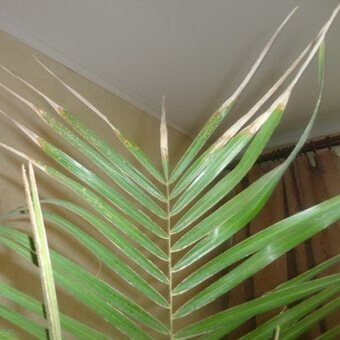
The withering of the date palm occurs for two reasons: improper care and insect pests.
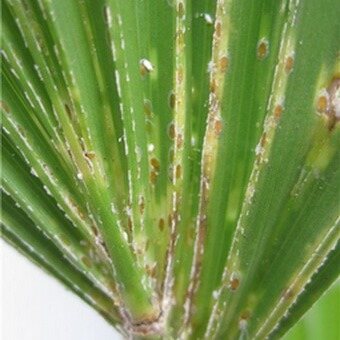

By eliminating these unfavorable factors, you can also deal with the consequences: softened trunk, dry tips of leaves, yellow color of the branches.
In order to deal with the diseases of this ornamental plant, it is worth linking them to the previous reasons:
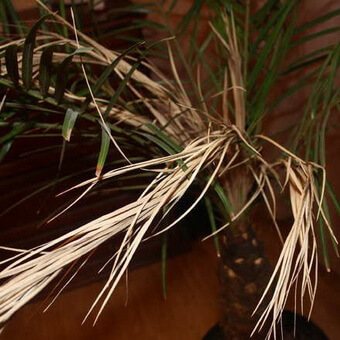

If the diseases of the home flower arose as a result of illiterate care, then the methods of treatment are quite clear - eliminating the causes of the disease and damage. However, if the answer to the question of why the leaves of an exotic date palm dry and wither lies in the presence of insect pests, then the situation is more complicated. Here one cannot do without chemicals and "drugs".
It is worth remembering that all your efforts and efforts will be rewarded. Your home beauty will delight the eye with her healthy and presentable look, decorating your home interior!
For the owners of the date palm, you need to be patient, since in the first five years of its life this plant does not differ in its presentable appearance.
Only seven-year-old representatives of this home green "decor" will be able to refine any room, make it more refined and comfortable.
Proper care of such an exotic flower requires consistency and consistency. It is in such cases that flower growers will not have any questions about why the decorative date palm gradually dries and how to deal with these.
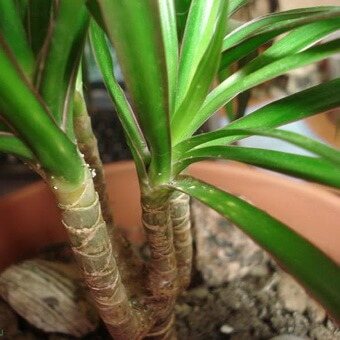

The main nuances that beginner growers should remember:
- the leaves are sun-loving and therefore it is worth ensuring that it falls on all branches. To do this, you can periodically turn the pot with the plant;
- a prerequisite for the normal growth and development of a flower is good drainage near the roots, since stagnant moisture can damage the root system and, as a result, lead to the death of the entire plant;
- an exotic plant is very demanding on the quality of water. Watering is necessary with settled water at room temperature without chlorine;
- so that the tips of the leaves of the date palm do not dry out, they must be sprayed abundantly once a day, while covering the soil in the pot with foil;
- pest control can be prevented by regularly wiping the leaves of the plant with a damp cloth, achieving a well-groomed and healthy appearance;
- it is necessary to be very careful with the top of the palm tree, since even a small break in the upper part of the stem can lead to its death;
- the lack of mineral organic dressings may be the main explanation of why the refined leaves of the decorative date palm turn yellow;
- as fertilizers, it is advisable to use complex preparations designed specifically for varieties of domestic palms.Such additives should be made at least twice a month in the spring-summer period, and in winter - once every 30 days is enough;
- the draft is painfully tolerated by the plant and can adversely affect its condition.
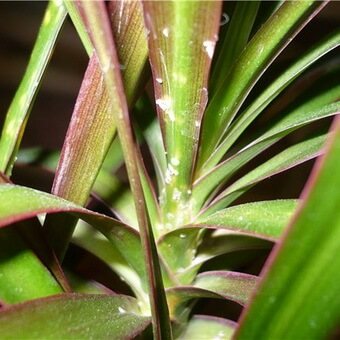

The described rules will help to achieve optimal results and prevent possible diseases that cause the exotic date palm to turn yellow.
The brown ends of the leaves of a palm tree are the result of excessive dryness of the air and improper watering (overdrying or waterlogging) of the earthen coma. In summer, the palm tree is watered abundantly, avoiding stagnation of moisture (it is impossible for water to get into the "heart" of the plant - it will rot and the palm tree will die), wash the leaves with water from pests and dry out, spray. If the temperature in the room is above 16-18 degrees, the palm should be sprayed daily. In winter, watering of palm trees is reduced, since they need a period of relative rest (from November to February) and slow down (or completely stop) growth. Now regularly spray the palm tree one by one: with water with the addition of Epin and horsetail broth. Sometimes use horsetail decoction to water the palm tree as well, adding it to the irrigation water - it is rich in silicic acid, which palm trees love. If there are no leaves on the palm tree, build a "mini-greenhouse" in the pot to create a microclimate for its roots and an onion-shaped thickened shoot with a growing cone from which new leaves develop; ventilate the greenhouse regularly. Protect the roots of the palm tree from the cold in winter. At the end of the dormant period, transplant the palm tree into a new deep (since the roots of palms are long) pot with drainage, preparing a substrate from equal parts of turf, leaf, peat soil, humus and sand (for adult palms, clay is added to this mixture). When transplanting, remove the dead roots by sprinkling the slices with charcoal; healthy roots cannot be cut - put them in a pot in a "ring". After the appearance of new leaves, start fertilizing by feeding the palm tree in spring, summer and half of autumn (from March to October), alternating mineral and organic fertilizers. Keep the palm in the light (but keep out of the sun) or in partial shade. Loosen the topsoil regularly without touching the roots; protect from drafts. Dried or damaged leaves from palm trees can be removed only when the leaf petiole dries up - otherwise the nearby leaves will begin to dry out.
Horsetail decoction concentrate recipe
: 30 g of dried horsetail (buy at the pharmacy) pour 1 liter of water and leave for 24 hours, then cook for half an hour and strain after cooling; dilute 1: 5 before use. This broth is also effective for spraying indoor plants against powdery mildew.
The main cause of illness is usually improper care. The plant can get sick due to non-observance of the heat, humidity and lighting regime. Why is the date palm drying out and by what signs to determine what the tree is sick with?
- If you notice that the trunk of a palm tree has become soft and gives off an unpleasant smell with a tinge of putrefaction, while the leaves have changed their color, become dark, almost brown, - most likely, you have overdone it with watering.
What to do?
Of course, stop watering, first of all, and dry the soil. It is better to remove the palm tree from the pot and carefully examine the roots. If the roots have darkened, become watery and soft, you are probably late, and you will not be able to save the plant. If not all the roots have died, but there are also living ones, it is necessary to carry out a separation operation. Cut off all bad roots, and sprinkle the "wounds" with coal powder.
- The darkened tips of the leaves, acquiring a brown tint, are evidence that the air in the room is dry, or the tree has fallen into a draft and has undergone a sharp temperature drop.
What to do?
Dead leaves are removed, and this should be done with a sharp knife, and not by cutting off.At the same time, if you already have an adult date palm, and the leaves in the lower part of the plant turn yellow, this is a normal phenomenon inherent in a developing plant.
This property of the date palm (shedding the lower leaves) was used in ancient Egypt as a primitive calendar. In one month, one new leaf just manages to grow on a date palm and one old one to die.
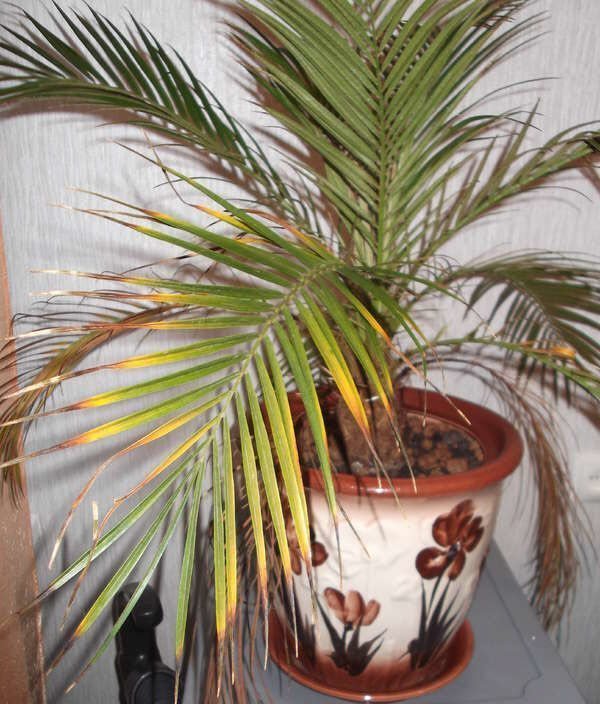

- If the date palm has a pale appearance, it may be due to excessive lighting or pest infestation, such as red spider mites.
What to do?
In this case, shade the plant a little to keep it out of direct sunlight.
- You have noticed that the leaves of the tree darken, begin to curl into a tube and fall off, and small brown plaques have appeared on their surface. In other words, the date palm dries up what to do
?
All these signs indicate that unexpected guests have settled on your tree. It can be a mealybug, or a thyroid gland, or a spider mite. The procedure in this case is as follows:
- If you observe the normal state and growth of the date palm trunk, but the leaves dry and curl around the edges (even if they do not change color), this indicates that you are not watering the plant enough, and the air in the room is too dry.
What to do?
Carefully cut off the dried edges without touching the green (live) part, so that a thin yellow stripe remains at the edges. You can completely remove only leaves that are completely dry, otherwise this trouble will spread to other leaves. Place a container of water next to the plant, or move the pot away from the heaters, or find another convenient way to increase the moisture in the pot area.
It is assumed that it is the date palm (Phoenix) became the prototype of the legendary Phoenix bird that rose from the ashes. Indeed, in the dead, hot sand of huge deserts, palm trees rise, as if from ashes, and give life to many plants, animals and people.
Black dots on the plant
Black dots on the leaves are an alarming symptom for plant owners. Blackening of the leaves occurs when there is excessive temperature in the room and insufficient watering of the flower. If the palm tree is not rearranged in a cool place and enlarged in time, the plant will die.
The second reason for the appearance of blackness on the leaves is the other extreme. Many owners literally fill in the flower and put the hovea in a cool place in a draft. The result is one: blackening of individual leaves, then the entire crown, which will lead to the death of the plant.
To avoid this, it is necessary to provide a stationary temperature
20 to 24 degrees Celsius and
humidity
60–65%.
How to provide the date palm tree with proper care?
When growing a plant in indoor conditions, you need to provide it with the most acceptable care. If it is easier with lighting in this sense, then with watering it can be difficult to guess, because we do not see what is happening inside the pot, and piercing the soil in the pot is dangerous - you can damage the roots. You can check soil moisture in the following way. Use your knuckles to tap the pot from top to bottom. A booming sound means the soil is dry, a dull sound means the soil is wet.
With the correct soil composition, you can water the pot until the water flows into the pan. The water that has poured out there must be selected after 2-3 hours, if it remains there. Water the palm tree, like most indoor plants, with settled water at room temperature.
Depending on the age of the plant, the composition of the soil also changes.
White spots: what to do
Sometimes white spots appear on the leaves of the hovea fan crown. This is the first sign excess chlorine
in water for irrigation. Not settled tap water affects the development of the phytoplasmic structure of the leaf and disrupts the natural synthesis of the plant.
Did you know?
Industrial chlorine, which does not have an additional electron of natural valence, enters into intracellular interaction with the atoms of the released ozone and "quenches" the process of photosynthesis. As a result, the final function of the plant - the release of oxygen - atrophies. White spots on hovea leaves are dead areas of chlorophyll.
In order to avoid the disease, it is necessary to water the palm tree with settled, or even better, melt water. Experienced flower growers freeze nylon with ordinary water in a refrigerator and then use it to water the hovei.
Date palm from stone
Not everyone knows that from the usual date that we buy in the store, or rather, from the bone left from it. True, this will take time. Place the date pit in plain water for a few days, changing it daily. In order for the sprouts to appear faster, it is recommended to scald the bone before planting. Dates, which have been “lying” for a long time, are unlikely to sprout quickly, but here nothing depends on us.
The seed is pushed vertically into the ground so that the ground covers it by 1 cm. The ideal temperature for germination is 25-30 o C. Usually, seedlings appear in 2-3 months, but at the beginning the tree grows very modestly. And only in 5-7 years your room will be fully decorated by a wonderful representative of the palm family.
There are many reasons why a palm tree turns yellow. Some of them are natural; over time, the yellow spots disappear. Other reasons are due to improper care of the plant, requiring certain measures.
Yellowing of the leaves is a sign of improper care
Palm is an exotic plant from the tropics. In the conditions of a city apartment, the southern flower often does not acclimatize well, it needs to create the right conditions for normal growth and development. Otherwise, the color of the leaves changes, its owners have a question why the leaves of the palm tree turn yellow.
What to do when leaf tips dry
A dry tip can even appear on young leaves, provided that the palm tree has been growing in the same substrate for more than three years. During a given period of time, the substrate accumulates salts, which prevent the roots from fully assimilating nutrient components, even with regular feeding.
An overabundance of salts leads to the death of roots - the main suppliers of nutrients to the flower. Inadequate nutrition leads to drying out of both young and old leaves. Leaves may also begin to dry out due to the structure of the soil. For example, heavy clay soil does not allow water to pass through well. Leaf tips can dry out if there is an excess of phosphorus in the soil. This component is found in fertilizer complexes for tropical varieties, which are used strictly following the instructions so as not to harm the plant. Soil problems are the main reason for tip-drying of young leaves. To eliminate the problem you need:
- Transplant the plant, especially if the transplant has not been performed for the last 2-3 years.
- Pay attention to fertilization, perhaps the selected preparation is not intended for feeding a particular type of palm tree, contains an excess amount of fluorine and other minerals.
- Change the soil, increase the amount of humus and peat (the soil may be too light or clayey and heavy).
Common causes of yellow foliage
Sometimes palm leaves turn yellow and fall off for a natural reason - the plant gets rid of the old lower leaves. But more often than not, yellow leaves appear for other reasons.
Dry air
Houseplant owners often wonder why the leaves of the palm tree dry. It often becomes hot in apartments in winter due to hot batteries. Such an atmosphere negatively affects green plants; for a palm tree, the interval from 15 to 20 degrees is considered a suitable temperature in winter. Dry air must be humidified, a tropical plant should be sprayed with a spray bottle.
The top layer of the soil should be moistened; often, the palm should not be watered.
Draft
The opinion that the palm tree can be placed only in the southern part of the room is incorrect. Direct sunlight has a detrimental effect on the plant; it is best to place the pot a little further from the window. In winter, a cold window sill harms the flower, at this time of the year most of the palms dry and wither, their leaves turn yellow, turn black and fall off. Drafts are contraindicated for palm trees.
During airing, it must be covered or taken out of the room. At the same time, the access of fresh air to the palm tree cannot be stopped, otherwise growth will slow down.
Frequent replanting
One of the answers to the question why the leaves of the room palm turn yellow is the wrong transplant. It is necessary to place a palm tree in a new pot when it is cramped in the old pot, the roots have grown too much. Transplanting a young plant should be done no more than once a year. In some cases, the topsoil can be replaced. The older flower is transplanted about once every three years. The new pot should be taller and wider than the previous one.
Watering
Sometimes trying to figure out what to do when the tips of the leaves are drying out on a palm tree, the answer is to reduce the number of waterings. The plant is considered moisture-loving, but only if there is good drainage in the pot. Otherwise, moisture is trapped in the ground, and the roots begin to rot. And since some of the roots do not supply moisture to the crown, the leaves begin to dry.
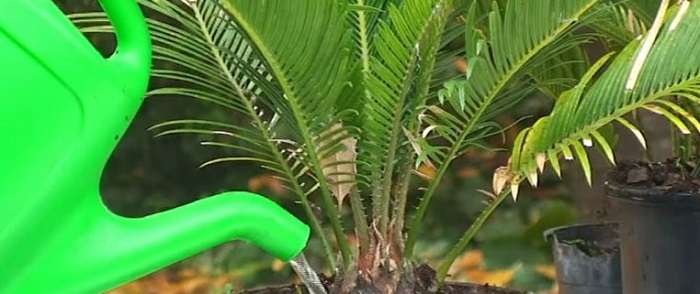

Watering should be done when the upper third of the pot has begun to dry out, and the lower third is still slightly damp. Also, the amount of water used varies from the air temperature - in fairly cold rooms (5-7 degrees), watering is performed once every 1-2 months, or is completely replaced by spraying the crown. After moistening the soil, it should be loosened to open air access to the roots and ensure the evaporation of excess moisture.
Diseases and pests
Shields
Sometimes the question is why the palm tree dries ,
resolved in an unexpected way - insects, among which the most common are scale insects. These are rounded brown insects from the family of Homoptera, the females have the so-called scutes. Palm scale insects attach to young shoots and suck the juices out of them.
There are several options for substances to combat scale insects:
- soap solution;
- garlic solution;
- alcohol solution;
- chemical preparations - insecticides (actellic is the most effective).
Spider mite
This small insect is difficult to see. In the presence of a tick, the leaves turn yellow and are covered with a small cobweb.
To defeat the spider mite, folk (onion solution) and chemical methods are also used. Before processing, wipe the palm thoroughly with a damp cloth.
This is one of the most dangerous insects for the palm tree, it is a large white louse. The plant looks like it is sprinkled with flour, all parts are covered with mucus. Worms attack the flower very quickly, the palm leaves turn yellow.
To save a palm tree from a mealybug, preventive measures are needed. If a disaster has happened, then all the above methods of pest control are effective. You can use citrus zest tincture and olive oil.
Mealybugs are extremely dangerous for palms
Proper care is a panacea for many diseases
Weakened plants, deprived of proper care, are most susceptible to diseases. Compliance with all the rules
:
- glaze;
- top dressing;
- temperature;
- light mode;
able to prevent many diseases.
It is necessary to regularly inspect the plant, and if pests are found, immediately destroy them.
Domestic palms have long come to our homes from southern latitudes, from hot countries.Today, these southern beauties are used with great success for landscaping a wide variety of premises. But sometimes you can see that the tips of the leaves of a palm tree turn yellow, or even the entire leaf dries up and falls off. Why this happens and whether it is possible to avoid such troubles when growing a palm tree at home is a question that worries many lovers of this beautiful exotic plant.
The main reason for the drying of the leaves of the domestic palm is improper care and improper maintenance. There are several possible reasons for this.
Proper watering
The most important condition for the formation of beautiful green leaves in a home palm is proper watering.In addition, the plants need regular spraying. It is imperative to carefully monitor that when watering the earthen lump is sufficiently evenly saturated with moisture. This nuance is revealed by the usual tapping on the pot. If the sound is sonorous, it means that the ground is dry. A dull sound is wet. It is also necessary to pour out excess water from the sump after watering the plant. Water for watering a palm tree must be used settled, and water the plant only after the earth has dried out, checking by tapping on the pot.
Indoor air temperature
It is necessary to monitor the air temperature in the room where the palm tree grows. It would be a mistake to think that the palm tree needs heat in winter. Palm trees, which are native to the tropics, survive the winter in moderately warm conditions, but subtropical beauties need cooler conditions in winter.
For most plants, the optimum temperature in winter is 16 -20 degrees. And do not put the plant in a draft, especially in winter. Plants do not tolerate drafts, especially in winter, they are too sensitive to cold. So that the root system of the palm tree does not suffer, you should not put the plant on the cold marble of the floor or windowsill in winter. Having placed the plant in a safe place, it is nevertheless necessary to provide for the palm tree to receive fresh air, otherwise its growth and development will slow down.
Moisturizing
Air humidification during the heating season is a prerequisite for keeping a home palm. Dry air can greatly harm the plant. The leaves begin to dry, the tips turn yellow quickly, and then gradually die off. Therefore, by all means, during the heating season, plants need to be sprayed and humidified in the apartment. Throwing a gentle shower on your palm tree every morning will give you wonderful results and will also improve the humidity in your home. (It is better to take boiled, settled water for this purpose and pour it into plastic bottles for storage).
You can purchase a special air humidifier, today there are a great many of them on sale, with a variety of functions. They are able to spray water in the room, spray with a fan. It is very convenient to use a hygrometer to determine the humidity in a room. There are even digital versions of hygrometers - thermohygrometers - with an additional indication of air temperature and time. Although there is also a popular method for determining moisture. You just need to put a pine cone in the room. If the room is dry, then the scales on it open, and if it is damp, they close tightly.
Top dressing and transplanting
There are special liquid fertilizers for palms today. In the summer, it is necessary to feed the plant twice a month, and in the winter, once is enough. If the root system has grown, it is necessary to transplant the plant in a timely manner into a pot of a suitable size. But if done incorrectly, the leaves of the palm tree can begin to turn yellow. You cannot transplant a young flower into a new pot more often than once a year. An old palm tree can be replanted every three years. A new plant pot is chosen not only for color. It needs to be slightly taller and wider than the old one.In addition, when cutting off the yellowed tips of yellowed leaves, care must be taken not to cut or damage the green part of the leaf. From this, the sheet will only begin to dry faster and will soon fall off.
Diseases and pests
Sometimes insect pests are the cause of leaf drying on a palm tree. Most often these are scale insects - small brown, rounded insects, and females have small scutes. These insects, sucking on young shoots, suck the juices out of them. As a result, the palm leaves turn yellow and the plant may die. There are many popular ways to kill insects, as well as insecticides that are quite effective.
Care and proper care will give you the opportunity to admire the beautiful ornamental plant in your home at any time of the year.
Popular types
This plant with feathery wide leaves and a dense crown is quite unpretentious in care. It grows best on clay-sod soil. There are about 15 species of date palm, it has solid edible fruits - dates.
Date palm is an unpretentious plant
Butea
It can grow up to 6 meters long, its crown resembles a fan, the leaves are tough. Indoors, you can try to grow a dwarf species. Bright sunlight is useful for a boutique, but high humidity is not, it dries up. In summer, weekly watering is enough, and in winter this can be done even less often. Butea blooms beautifully.
Livistona
There are about three dozen species of Livistona. At home, it can grow up to 3 meters long, has bright green leaves.
Caring for it does not require much work: it must constantly receive moisture, the temperature in the room should not drop below 20 degrees.
This species is distinguished by narrow, tough leaves. Hamerops is not afraid of direct sunlight, grows slowly, does not need frequent transplanting, the soil of the plant should be loose.
Hamerops is not afraid of the scorching sun
Hovea
The variety has wide feathery leaves. It does not grow quickly, but it can reach the ceiling. Hovea endures lack of light, moisture, invasion of harmful insects.
Washingtonia
This flower needs constant sunlight, it can withstand low temperatures (up to 8 ° C). What you should not do is water Washingtonia abundantly, otherwise the soil will dry out.
Yucca
The most common type of palm. She needs light almost round the clock, the yucca pot must be turned so that the sun's rays fall on her. In the dark, artificial lighting should be used.
Watering the yucca depends on the season - it needs less water in winter and autumn. Indoor yucca does not bloom.
This plant is characterized by fan-shaped leaves, it can grow large, or it can remain in a small pot. For successful growth at home, minimal conditions are needed, sabal has a medicinal effect.
Sabal can grow to impressive sizes
How to humidify the air
Dry indoor air contributes to the fact that the leaves of the palm turn yellow. An unusual way to humidify is to put several pots of plants in the room.
They will release moisture into the surrounding atmosphere, which will give the room an optimal microclimate. Another popular method is to use a household humidifier.
Airing
It is needed all year round for fresh air so that the tips of the leaves do not dry out. At temperatures below 0 ° C, windows and vents should be opened for a short time, but often. The room temperature should be within 20 ° C.
Temperature
The reason for the yellowing of the foliage can be too low room temperature in winter. Do not forget that the palm is a tropical plant that is constantly in its homeland in a warm climate. Plant varieties brought from tropical latitudes need a temperature of 16 to 24 degrees. Palms growing in the subtropics are able to withstand lower temperatures, not lower than 8 degrees.
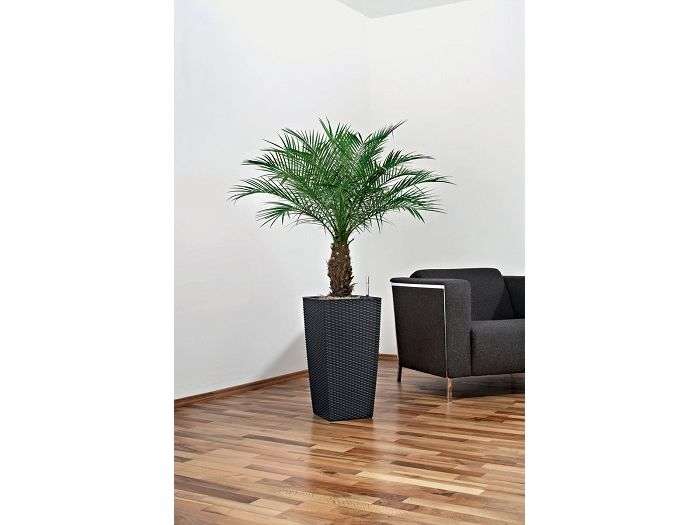

Regardless of the species, this plant does not like drafts, and its roots do not like cold. A pot with a palm tree should not be on a windowsill or concrete floor during the cold season. To protect from hypothermia in winter and excessive overheating of the roots in summer, pots will help - the air gap between the walls will act as a thermostat.
Drying reasons
Why do yucca leaves turn yellow and dry? What to do, how to care for a palm tree to prevent this from happening? How to save? When there is not enough light, yellowness also appears on the tips of the leaves of the plant, they begin to dry.
For the normal passage of the process of photosynthesis, it is desirable to provide it with bright illumination with scattered rays, but, in no case, not direct, so as not to provoke the appearance of burns.
If the plant itself, its stem dries, then the problem is a lack of moisture, or it is weakened by some disease. In this case, carefully examine the leaves and stem for the presence or absence of parasites on them.
Lighting
Sometimes the answer to the question of what to do if the leaves of a palm tree turn yellow is to change the location of the pot with the plant. It is best to position the palm tree a meter away from the window, this will provide enough light, but will not allow direct sunlight to burn the leaves during the particularly hot summer months.
A plant in the shade should be immediately moved closer to the source of natural light, since no palm tree can survive its absence.
How to save a dracaena flower when the leaves dry and fall
What to do if the foliage of a palm tree turns yellow, falls off, and the trunk begins to rot? Surgery should be started. The top of the flower is cut off and placed in soil for rooting. Or put in a glass of water until full roots appear. Basically, this process takes two months.
If the cuttings are kept in a container of water for a long time, the stem may turn yellow. Water promotes the growth of bacteria, and a change in the color of the trunk indicates the likely death of the plant. To save a young bush, the cutting urgently needs to be transplanted into a container with nutritious soil.
If the painful appearance is associated with dry air, then irrigation with warm water will help save the plant. You can water the palm tree from the shower, after wrapping the pot with plastic to prevent excess liquid from entering the soil. If the plant does not recover after the procedure, it is recommended to transplant it into a new container with fresh soil.
A flower affected by the flow of cold air will be brought back to life by spraying with warm water and transferring the pot to a warm, draft-free place. If the room temperature was below 15 degrees, there may be damage to the roots. The status of the root system should be checked. If injured roots are found, all damaged areas are removed, and the flower is transplanted into a fresh, moist substrate. If more roots are affected, then root the top of the palm tree.
A palm tree that has not been watered for a long time can shed all the foliage, and the flower's growth point will dry out. But even in this case, the plant can be saved. Initially, the culture should be well moistened to soak the soil and wake up the root system.
The dried top is cut off with a sharp scalpel, the cut site is treated with crushed coal, and the flower is left alone until the lateral buds wake up. Before the shoots appear, the palm is sprayed once a week with Epin. Watering is moderate, as the soil dries out. Complex fertilizers are applied twice a month. The container with the flower should be away from the sun, diffused natural light is recommended. In about 1-1.5 months, dormant buds should hatch.
Advice! When trimming the trunk, you need to think about the cutting height so that in the future the palm tree looks aesthetically attractive.
Conditions for the existence of a tropical plant at home
There are many varieties of palms, but not all are suitable for home cultivation. Diseases of palm trees arise in connection with the peculiarities of caring for them. Do not forget that the tropics are the homeland for most of these trees, because they are called that - tropical. Accordingly, for a tree for normal life, it is necessary to create conditions as close as possible to natural ones. First of all, you should ensure adequate watering. The tropics are not only hot but also very humid. The plant, by its very nature, requires a lot of water. Provide the palm tree with daily watering in the warm season; in the cold season, it can be reduced to 3-4 times a week. If you normalize the watering regime, then the yellow and dry tips of the leaves will gradually return to normal.
The most common reason for yellowing palm leaves is a lack of moisture.
Dry air is another factor that leads to the fact that the leaves of the plant turn yellow. In the tropics, the air is never dry, so plants get used to high humidity, which they will demand at home. To humidify the air, place a humidifier or hang a container of water in the room where the plant lives. After a while, the leaves should be saturated with moisture and turn green.
If these measures do not help, then most likely the tree requires a larger pot. It is worth knowing that it has a very branched root system and is not used to crampedness, therefore it will not put up with a small pot. The ideal solution is to transplant it into a spacious tub. If you think that a spacious dwelling is already allocated for the tree, then you should not touch it, but you can always feed the palm tree with specialized products from the store. Sometimes the tree starts to ache, because it simply lacks vitamins to maintain a full life. It is not allowed to repot the tree often, as it does not like it.
Like other houseplants, the palm tree can be attacked by various pests. Under their influence, it begins to wither, as a result, the leaves turn yellow and dry. Examine the tree carefully, if you find any insects, treat the plant with insecticides purchased from the store.
If, despite all the measures taken, yellowness still does not come off the leaves, you should pay attention to the place where the tree is. The room palm does not like drafts, it prefers a warm, calm place, but not near the central heating battery. When the leaves of a palm tree dry, this means that the owner did not give the tree the freedom to which it was accustomed to in its natural environment.
Exotic plants are increasingly found in the homes of domestic citizens. A slender and presentable date palm tree occupies a special place among such unusual decorative "green oases". However, her illnesses (for example, yellowing and drying of leaves), which occur with improper care, can upset inexperienced growers.
To get the desired result during the landscaping of the apartment, you first need to choose the right type of decorative palm tree.
Since not every tropical beauty can take root at home, experienced experts recommend giving preference to varieties:
- robelena - home flower up to 2 m high with attractive juicy leaves;
- Canary species - a plant with narrow and rather rigid leaves, which reaches 1.5-2 m;
- finger - the most popular variety due to its unpretentiousness and rapid growth, however, in appearance it is inferior to its "congeners".
Choosing just such species, you can avoid difficulties without significant effort and prevent situations when the graceful leaves of the date palm dry.
The main causes of problems and diseases of the domestic palm tree
In most cases, the leaves of the plant turn yellow in an unfavorable microclimate in the room, violations in care and damage to diseases, harmful insects.
Conditions of detention
It is very important for a tropical indoor plant to be in a room with a high level of humidity. Dry air, especially during the heating season, has a detrimental effect on it, the leaf plates begin to dry out, and in a short time they can completely die off. In winter, the recommended temperature regime should be in the range of + 15-20 ° C. It is believed that pruning a palm tree in such situations is a real salvation, but this is wrong. For a phytobeauty, it is best to grow in humid conditions.
To create a palm-friendly microclimate in the room, it is necessary to regularly spray both the air around it and the top layer of soil in the flowerpot. But frequent and abundant irrigation should be avoided, otherwise there is a high probability of the appearance of root rot, which will destroy the flower culture.
For comfortable growth and development, a palm tree should be protected from drafts, direct sunlight on leaf plates. The optimal solution is to identify a palm tree 1 m from the window. It is more effective for her to receive bright, but diffused light.
In winter, drafts can harm a tropical guest in a matter of days. Its leaf mass will begin to lose its natural color, becoming yellow, brown or even black. Such plates quickly fall off, the flower withers and dies. You can protect the palm tree from cold and damp air in the room during ventilation by means of a cloth with which it is covered, or take it out of the room. A fresh supply of air is especially necessary for evergreen plantations, it significantly activates all growth processes.
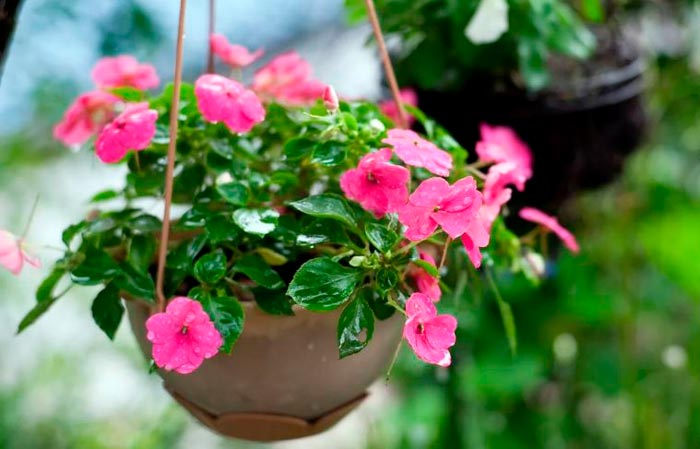

Care errors
The domestic palm tree, although it is not a capricious plant, but if there are gross mistakes in terms of care, it begins to hurt, the tips of the leaves turn yellow and dry out. Often the cause of such negative phenomena is an incorrectly performed flower transplant. It is recommended to perform this manipulation only during the period when the roots of the palm tree are completely entwined with an earthen lump. This will minimize the likelihood of injury to the root system.
The frequency of transplanting young plants is 1 time per year, adult specimens under the age of 6 years - 1 time in 2-3 years. Subsequent procedures will be almost impossible, it is very problematic to raise a large palm tree. Here it is enough to replace the topsoil with a new soil enriched with useful components.
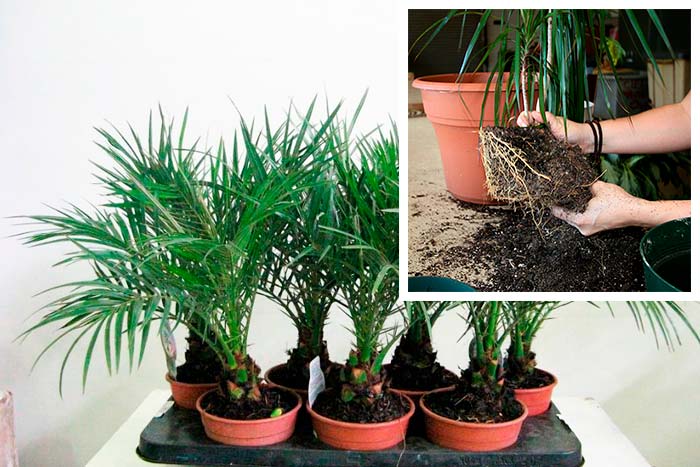

If necessary, a green pet can be transplanted unscheduled. This is important for identifying harmful insects on a palm tree, where a complete replacement of the soil substrate is required. In addition, forced soil replacement can also be carried out with the development of rot on the roots due to waterlogging, with strong waterlogging of the soil mixture in the flowerpot.
You should take care of an exotic beauty competently, preventing the earthen coma from drying out. The lack of moisture, as well as its excess, cause serious damage to the health of the plant, especially its underground part suffers.
Leaves turn yellow and dry in an evergreen plantation and with a lack of nutrients in the soil substrate. For normal growth and development, he needs such important components as nitrogen, iron, phosphorus, potassium. The deficiency of chemical elements greatly affects the decorative effect of the flower. Therefore, it is recommended to periodically use special formulations for representatives of palm trees for feeding., ornamental deciduous plants.
It is enough to add mineral complex compositions once every two weeks (spring-autumn). In order to avoid an oversupply of food, fertilizer must be diluted strictly in accordance with the instructions on the package. Beforehand, the soil in the container should be moistened.
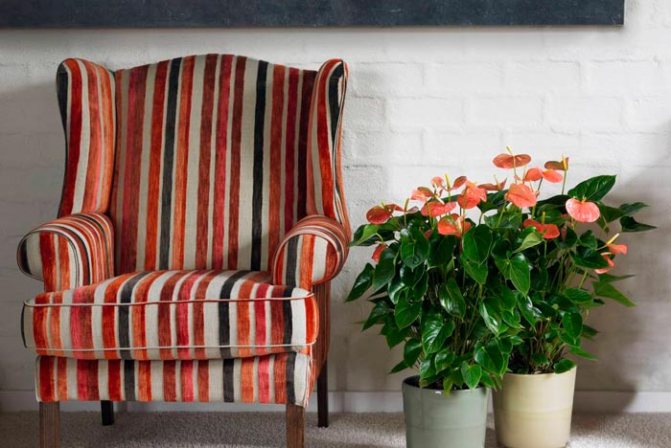

The appearance of pests
The yellowing of the leaves of a palm tree when grown in an apartment also occurs due to the invasion of parasitic individuals. It is attacked mainly by spider mites, scale insects, mealybugs. These pests feed on green mass and quickly capture new territories. Most often, specimens with a weakened immune system fall under the infection.
Such insecticidal preparations as Fitoverm, Actellik, Confidor effectively work against parasites on the palm. The working fluid is prepared taking into account the manufacturer's instructions, the recommended number of sprays is 3-4 times, but with an interval of 5 days. In case of serious lesions, the use of a highly concentrated solution is allowed, where the dosage is increased by 2-3 times. In addition, do not forget about additional soil spillage.
Dying leaves of a palm tree may indicate root rot, which in a short time can easily destroy it. You can try to save the plant from such a dangerous disease by transplanting it into another soil, but first you need to remove the affected areas of the root system, treat them with crushed coal.
Dracaena leaf diseases and their treatment
Drying of greens is not always associated with improper living conditions. An associated disease can become the cause of the problem. Among the most common diseases of dracaena, bacteriosis, heterosporosis, alternaria, phyllostictosis are distinguished. These diseases are infectious.
Heterosporosis is the most common disease of dracaena. A characteristic feature of the disease are elongated beige spots with maroon edging.
With phyllostictosis, light brown spots with black specks and green edging appear on the leaves. These diseases are treated with fungicidal drugs. Typically, the disease affects palms that grow indoors with dry air and suffer from a lack of moisture.
Alternaria is manifested by the appearance of brown spots with a yellow center on greenery. Over time, the spots darken due to the multiplication of spores of the fungus. For treatment, fungicides are used. The most effective remedy is Fundazol. You can buy the drug in a specialized store, and prepare a solution for irrigation (1 g of the drug per 0.5 l of water). You can use other preparations containing copper, but dilute according to the instructions. Processing is performed every 10 days, 2-3 treatments are required.
Excess moisture and high air temperature contribute to the development of bacteriosis. The tips of the foliage are covered with droplets of liquid, which, after drying, forms an oil film. A yellow stripe separates the healthy and affected area of the leaf. Sometimes the stem of the affected plant is covered with sores. If a plant affected by bacteriosis is sprayed, then the disease will spread to neighboring crops. To date, there is no drug that saves from this disease. A sick indoor flower should be thrown away as soon as possible.
Care errors leading to dry leaves
Any modification of the flower indicates that mistakes were made in the care and maintenance of the plant. In this case, it is important to detect and eliminate the cause in time. The most common mistakes:
- Incorrect excessive watering - the soil in the pot must have time to dry out. For control, a wooden toothpick is stuck into the ground.
- Excessively dry indoor air - the pot should be moved away from batteries and other heating devices.
- Insufficient amount of light - you should take care of additional lighting of the palm tree in winter.
- Drafts - we save frozen leaves with a warm shower.
- Insufficient amount of nutrients in the substrate - fertilizers in the form of sticks are sold in flower shops, which help to feed the culture with nutrients regularly and in the right amount.
Know! If, after transplanting, the foliage began to turn yellow and dry, then it is recommended to shed the soil with Epin's solution.
How to revive a plant
In order to reanimate palm trees in the event of drying of the leaf plates and their yellowing, you need to create the most favorable microclimate in the room. The room should be warm and humid. Increase the humidity level effectively by using a spray bottle, spraying the air near the green pet. It is enough to process water on the leaves three times a week, only soft water should be used, settled.
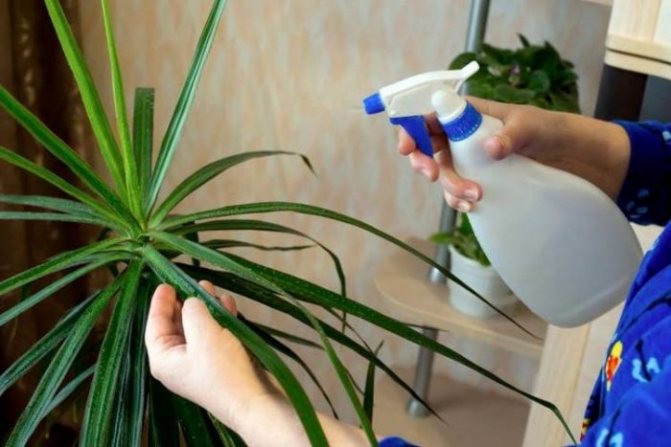

If problems with the root system are the cause of the drying of the palm tree, then they need to be solved and in the future to monitor the state of the soil substrate. Neither overflow nor drying out of the soil should be allowed. It is recommended to use an extremely sharp and disinfected instrument to remove diseased roots. In most cases, transplantation saves the plants.
The palm tree in home floriculture occupies one of the leading positions. The main thing is to prevent drying and yellowing of its leaf plates, you need to maintain an optimal temperature regime, humidity level and not ignore the basic rules of care.
How to fix problems
If the tips of the leaves dry on a palm tree, here's what to do:
- First of all, dried leaves should be carefully removed. If the entire leaf has dried, then it must be removed entirely, but if only the tip began to dry out, then only the dried part should be carefully cut off.
- Then, if the leaves of the palm turn yellow and dry, you need to replenish the missing water as soon as possible. To do this, the plant must be regularly sprayed and watered correctly. It is important that the earthen ball is moistened evenly. This can be verified by knocking on the pot in which the palm tree grows.
- You should also periodically fertilize the palm tree with special liquid.
If the leaves on your home palm are drying, you may not be following the conditions in which you need to keep it. Tropical palms should be warm during the winter, while subtropical palms are better suited to winters in cooler conditions.
Many growers are wondering. "Why do the leaves of the palm tree dry?" Let's try to figure it out.
Drying of the tips of the leaves in palm trees most often occurs from too dry air, insufficient watering. And they die entirely, if very old, from root decay during overflows or from damage by various pests and pathogens.
The yellowed tips of the leaves should be cut off. However, this should be done without touching the living green tissue of the leaf and leaving a thin strip of dry tissue, otherwise drying will go further even faster, and the leaf can be lost. Only completely dry leaves are removed, otherwise others will begin to dry.
Much depends on what light and temperature conditions your plants are in, how you care for them, because some fan palms need coolness in winter.
- Palms of warm rooms
- Areca, coconut, cariota, chamedorea, acanthophenix, phoenix Robelini - require high room temperature and humidity. - Palm trees in temperate rooms
- hovei (Belmora, Forster), Bonneti coconut, geonoma, clinostigma, rapalostilis, rapis, sabal, etc. - Palms of cool rooms
- hamerops, brachea, washingtonia, trachycarpus, etc.
In indoor conditions, palms need regular spraying, proper watering, in which the earthen ball should be evenly moistened, which is determined by tapping the pot with clicks from the bottom up. A dull sound appears if the soil is wet, harsh when it is dry. After watering, water should be poured into the pan, which will be absorbed into the ground within an hour. It must be drained or removed with a clean cloth. It should be watered with settled water after the soil dries out from above in the pot.
Palm trees of tropical origin require the maintenance of moderately warm or warm rooms in winter. Palm trees, the home of which the subtropics are best kept in cool rooms in winter.All palms do not tolerate drafts well, especially you need to be wary of cold air when ventilating a room in winter through a window. The roots of palm trees are very sensitive to cold, so palm pots should not be placed on a cold windowsill or marble floor slabs.
Plants need regular (twice a month in summer and once in winter) feeding with a special liquid fertilizer for palms. Examine the bottom of your palms' flowerpots to see if their roots have come out and are pushing the soil out of the pot from above? Then they need to be transplanted into larger planters with fresh soil mixture recommended specifically for palm trees.
Airing
- On a frosty day, do not open the windows wide in a room with plants. Also note that frosty air is dry in most cases. Therefore, ventilation does not increase the humidity in the room. It is best to ventilate more often, but little by little. Advice
: At a temperature of approx. 0 ° C, it is enough to open windows for 10 minutes every 2-3 hours.
- Advice
: If possible, control the temperature in the house, not by ventilation, but with a thermostat.
Natural evaporation of moisture
- Hang wet towels on the radiators or place bowls and other open containers filled with water next to them. Tropical aquatic plants in miniature vases and bowls will additionally humidify the air. Advice
: Wash glass vases frequently to prevent algae from growing on the walls.
- Advice
: Fountains with containers for planting plants are on sale. You can add essential oil to the water for the fountain.
- Advice
: Place a water level indicator in the planter, then the roots will not suffer from dampness, and the aboveground part of the plant will not suffer from dryness.
Green humidifiers
- Cyperus is unrivaled among indoor plants: depending on its size, it releases from 500 ml to 2 liters of moisture per day into the air. For such records, place a bowl filled with water next to it and spray its leaves daily. Advice
: Better yet, put several plants side by side.
- Advice
: Be careful if you have allergies. In this case, try not to touch the sparmannia leaves.
Electric humidifier
- There are a wide variety of models on sale with a wide range of prices. They evaporate, spray and spray moisture or evenly distribute it throughout the room by ventilation.
Spraying plants
- In a heated room, spray the leaves of green plants every morning. It doesn't take long, but it brings wonderful results. A gentle shower refreshes the plants, allowing their cells to work at full strength, and in addition increases the humidity in the room. Advice
: For spraying, boil water in a large saucepan and reserve in large plastic bottles.
How to save a palm tree from death?
How to reanimate a yucca? Timely response will allow you to reanimate the yucca. It is important to know what to do if it is affected by fungal diseases or pests.
If the problem is fungi or bacteria, we get rid of the affected areas of the plant, and treat the healthy foliage with a systemic fungicide. We reduce watering, do not spray at all.
These are productive measures for the first phase of the disease. When the disease is already actively progressing, the plant cannot be helped. It must be thrown out. We also throw out the pot from under the dead flower.
Start spraying and rinsing the foliage, mainly the back of the foliage, with a low-concentration solution of tobacco, onion peel or chamomile broth, garlic infusion. We wash the leaf, starting from the stem and ending with the edge of the leaf. The procedure is repeated until the final destruction of the tick.
Rescue from the shield
Laundry soap will be the best helper.
We dip a cotton swab or cloth into its solution, squeeze it slightly and remove pests with their help.
At the same time, we spray the larvae with a solution of tobacco mixed with kerosene or alcohol.
You can use purchased insecticides - fitoverm, actellik.
You can try to revive the plant. First of all, we change the soil. We clean the root system from dead and rotten areas. We disinfect the roots with a weak solution of potassium permanganate for half an hour, and then dry them and transplant them into new soil. No earlier than 15 days later, it is allowed to feed the false palm.
Considering the recommendations for pest and disease control of indoor yucca, you can easily grow a real southern beauty that will decorate your home.
If you find an error, please select a piece of text and press Ctrl Enter.

